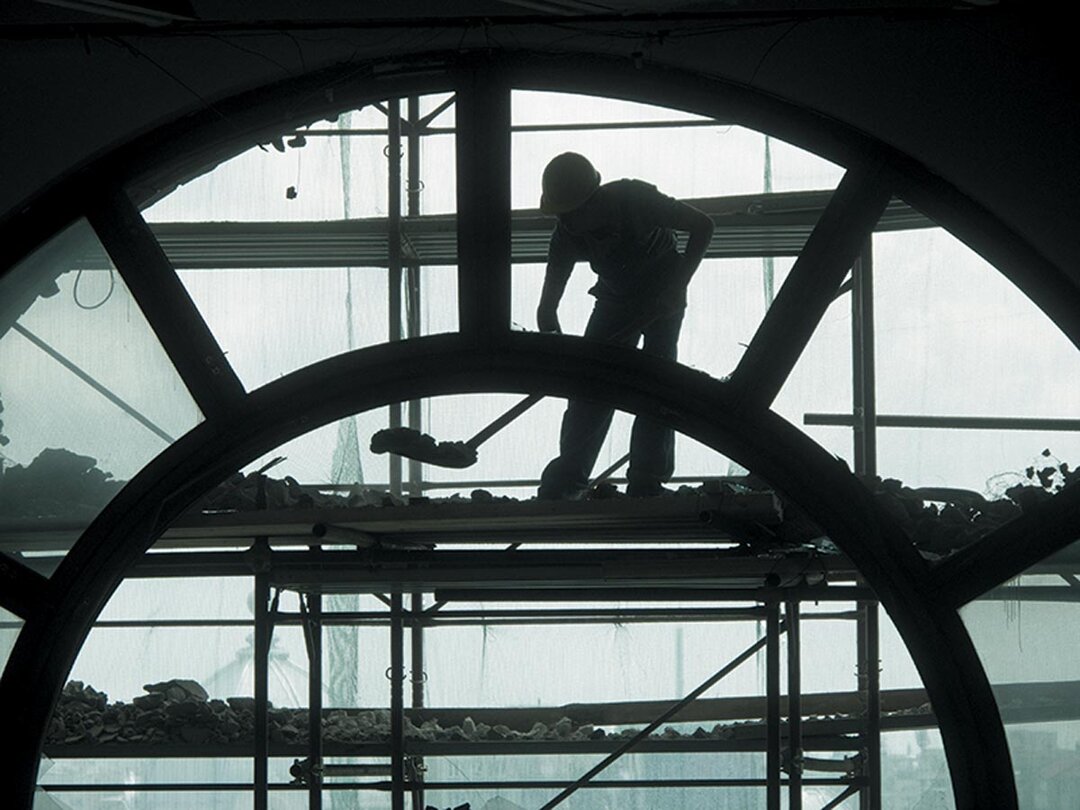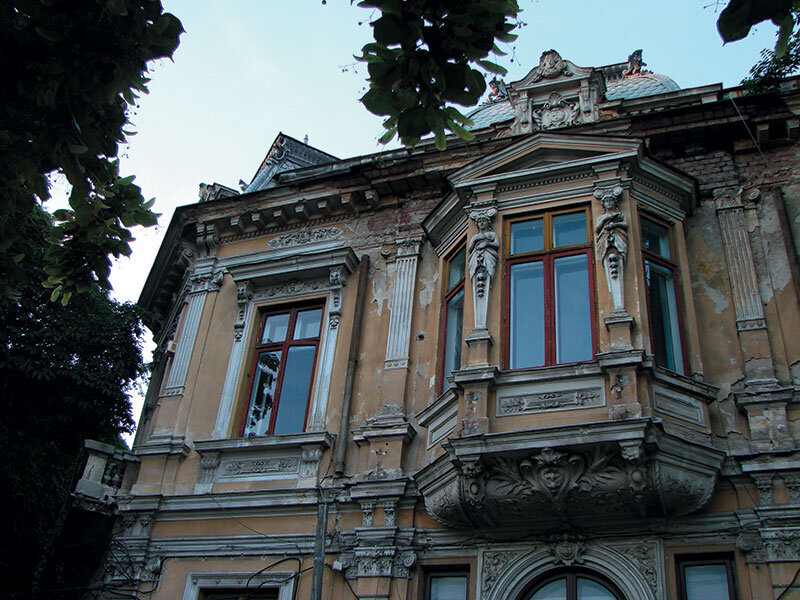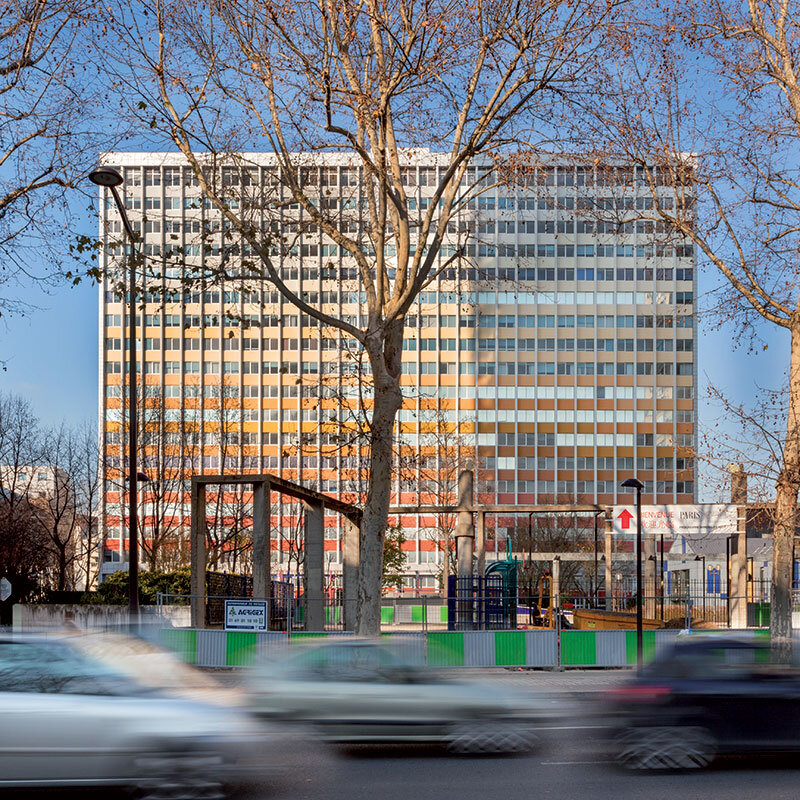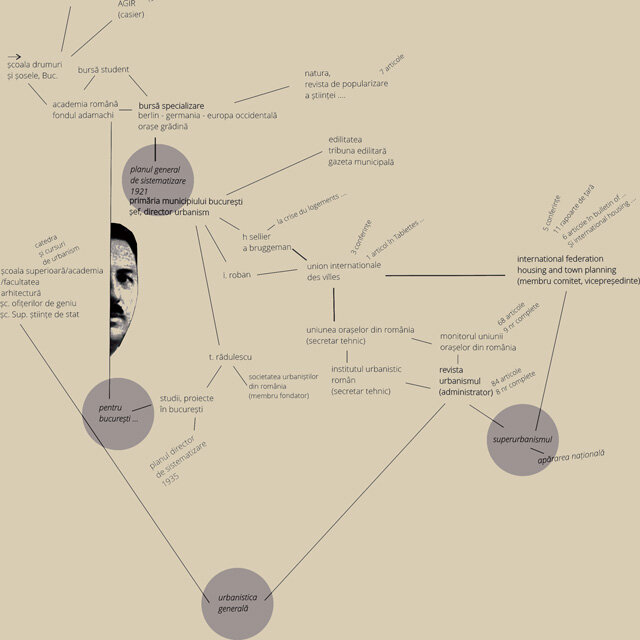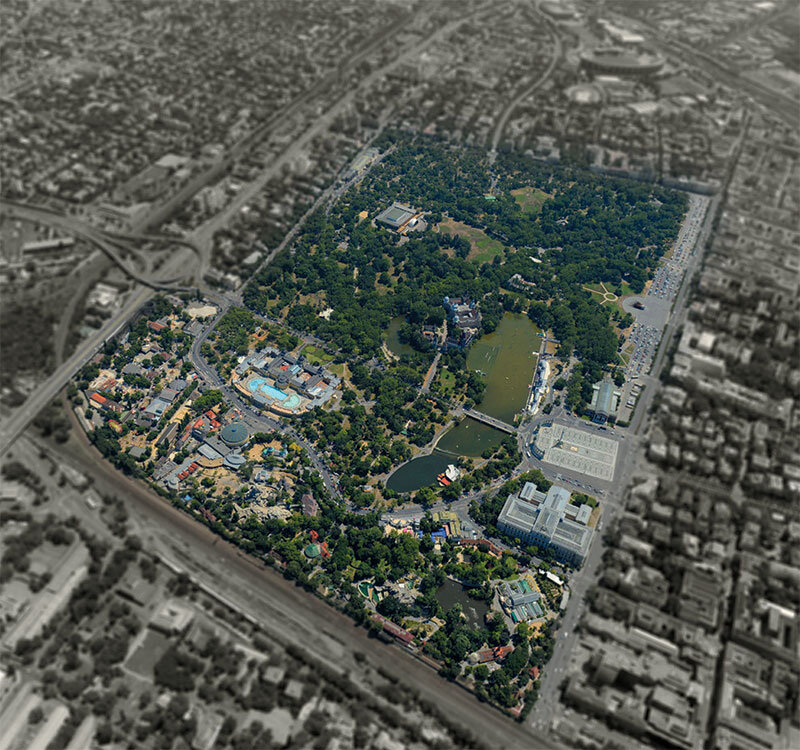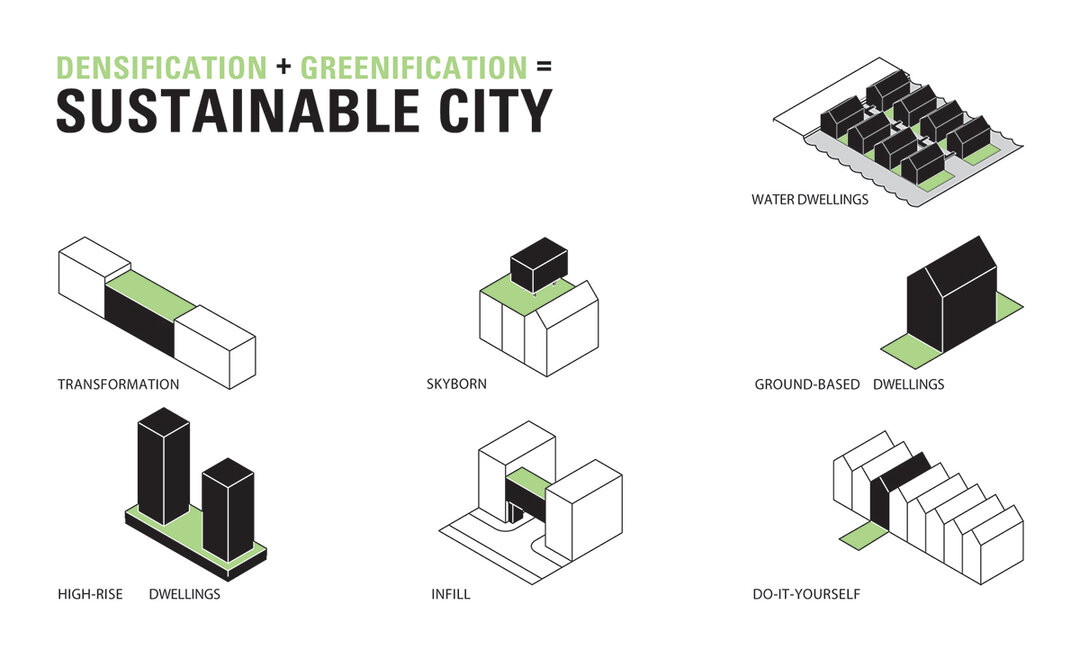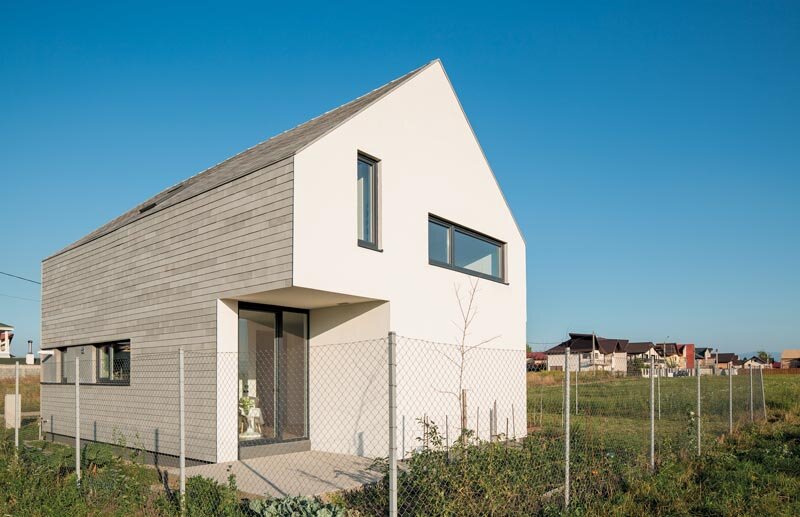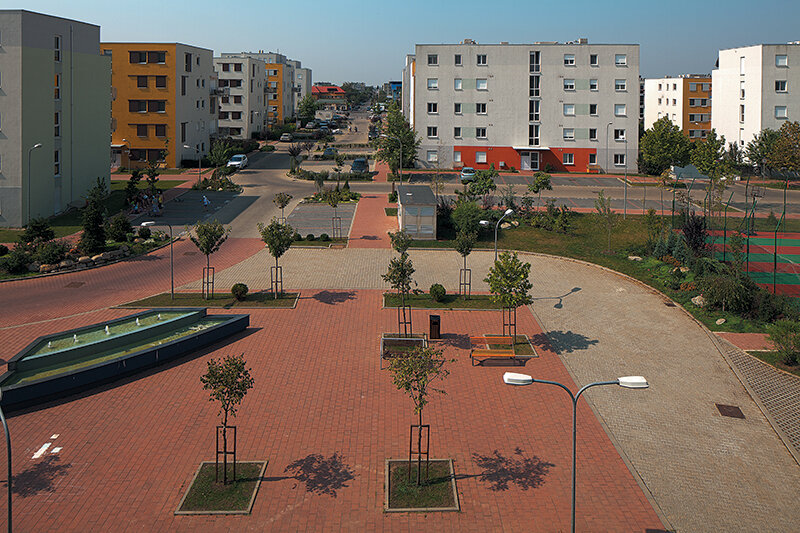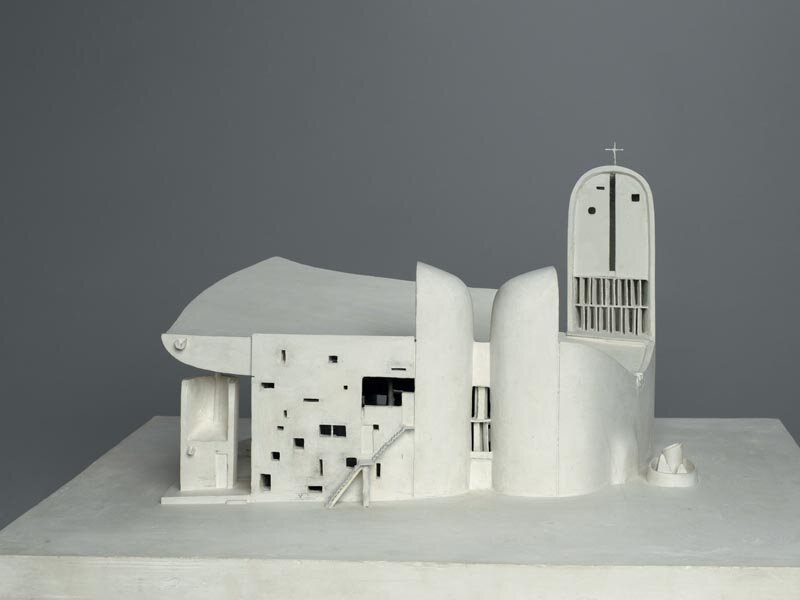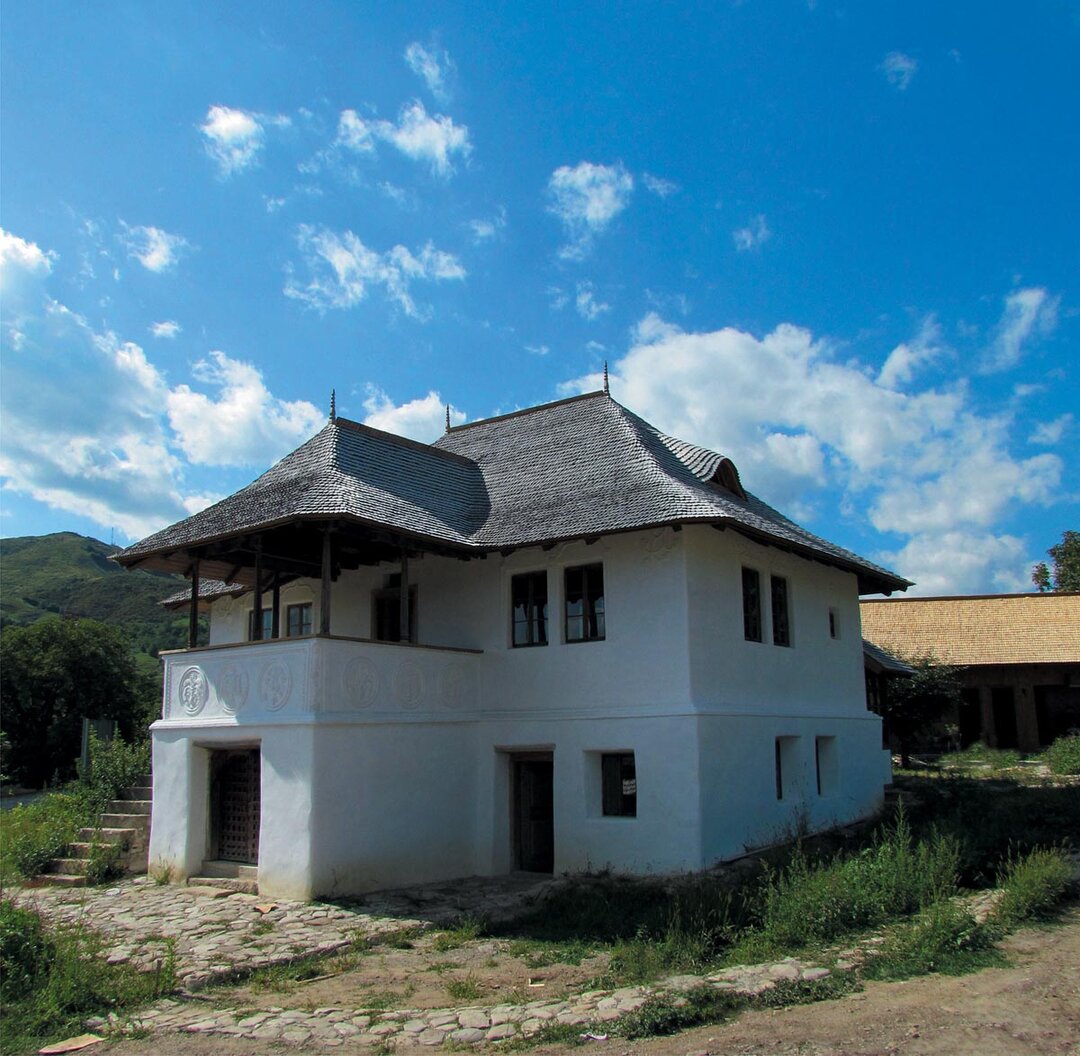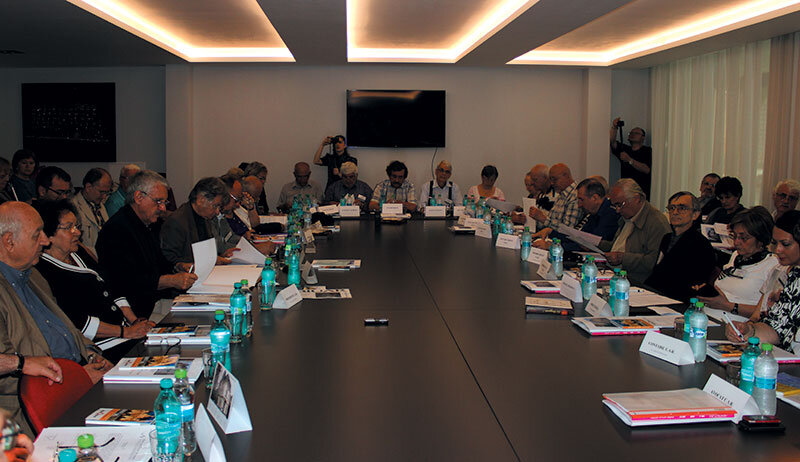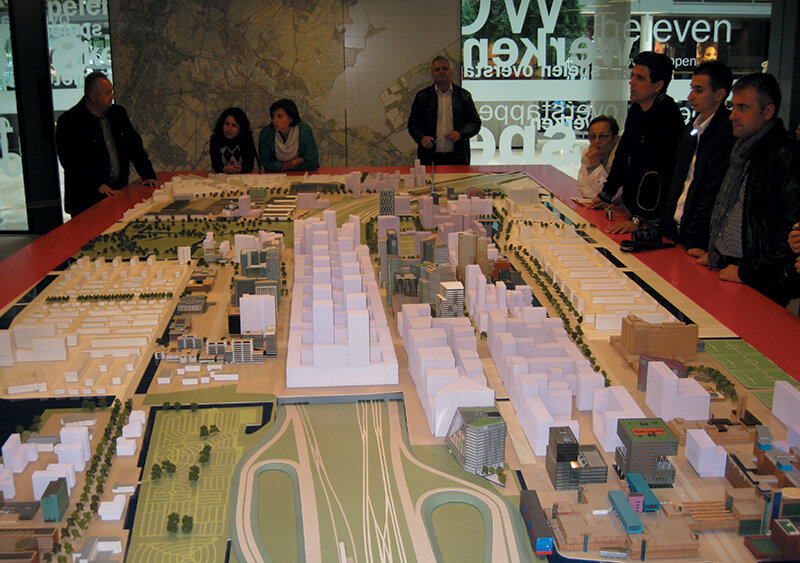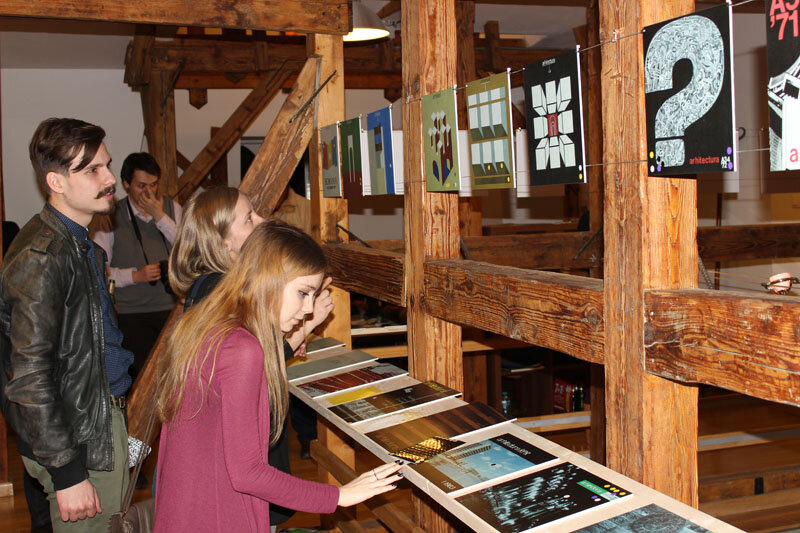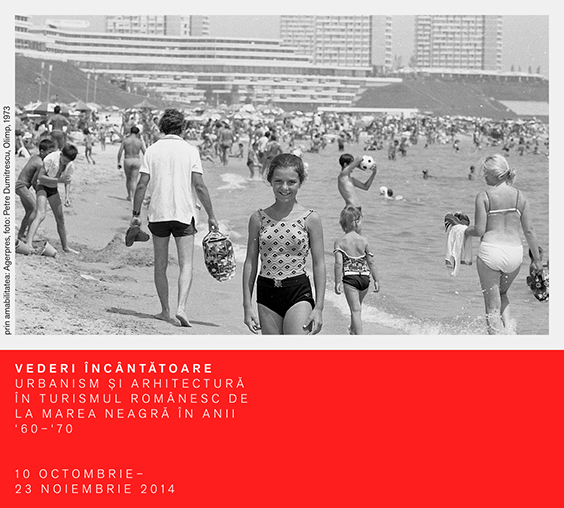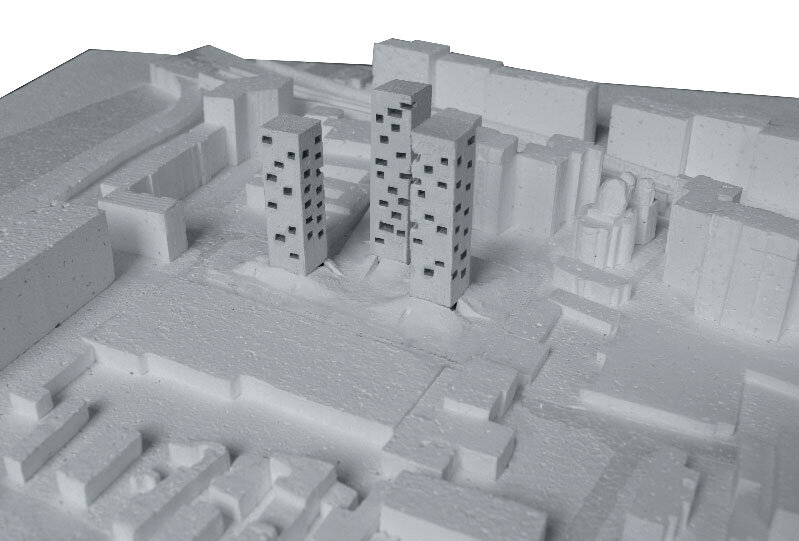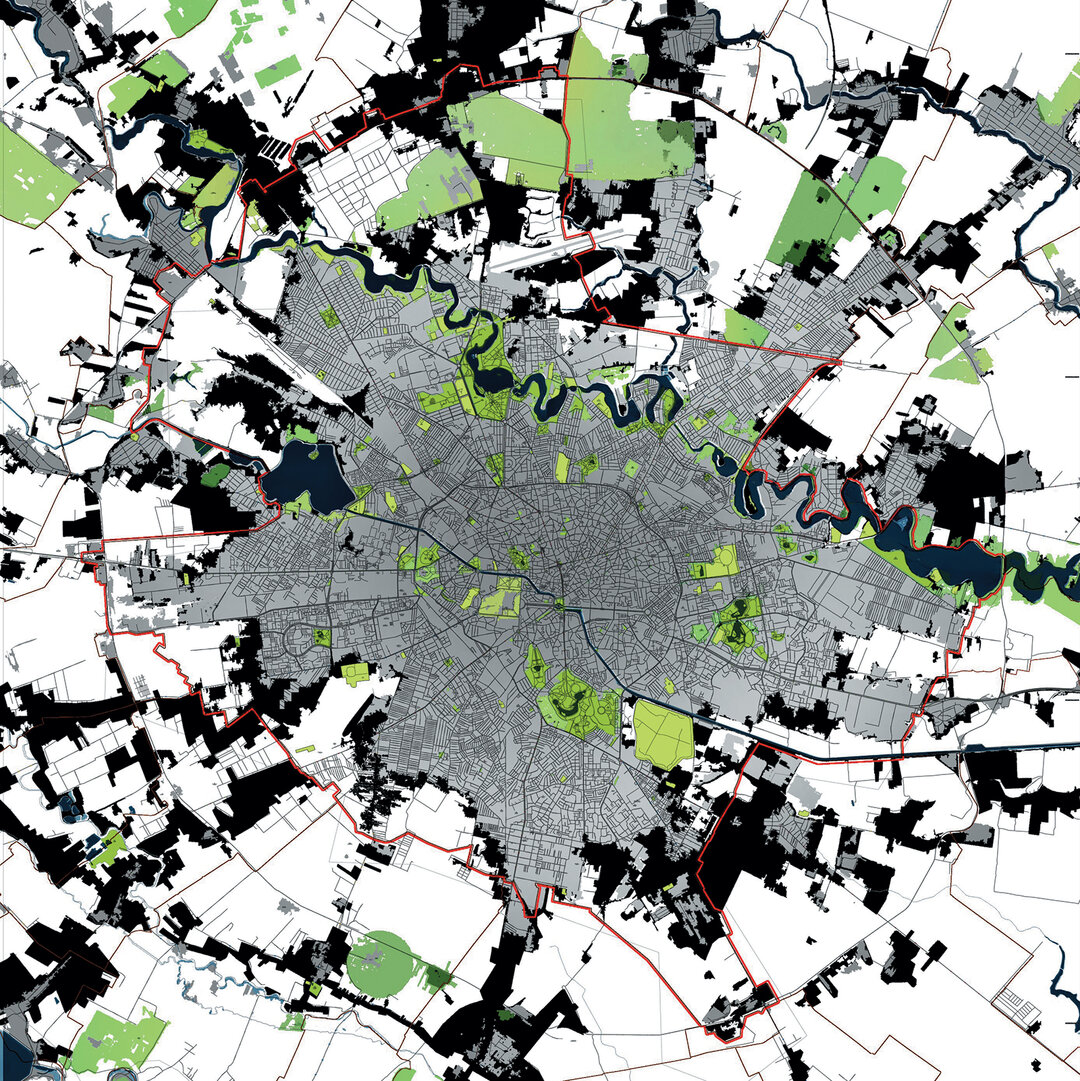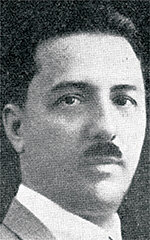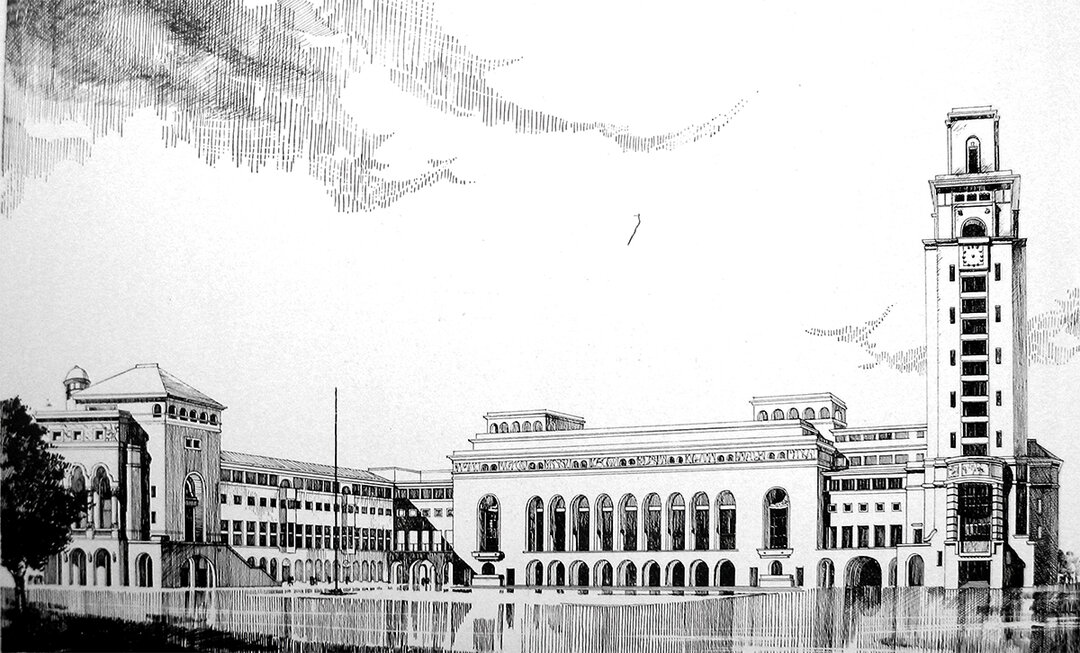
Cincinat Sfințescu, Engineer and Urban Planner
Eng. Cincinat Sfințescu (1887-1955) is the father of Romanian urban planning.
For Bucharest. Noi studii urbanistice, the first scientific urban planning study of Bucharest, and Urbanistica generale, the first specialized treatise written in Romania1.
Brief biographical sketch
Born on September 14, 1887 in Slatina;
Between 1905 and 1910 he attended the National School of Bridges and Roads in Bucharest;
between 1910 and 1913 he was a fellow of the Romanian Academy from the Vasile Adamachi Fund for the study of public urban planning and traveled in Western Europe, experimenting theoretically and empirically with the new science of urban planning;
in May 1914 he became head of the Capital's Plan Service, being in charge of the study of the new Bucharest Systematization Plan / General Systematization Plan approved in 1921, the first urban plan of Bucharest;
from 1920 to 1934 he was Director of the Cadastral Cadastre and the Bucharest City Works Registry;
from August 1934 he became urban planning advisor at the General Secretariat of Bucharest City Hall;
in 1926 he was elected a member of the board of the International Federation of Housing and Town Planning (IFHTP), London, and from 1931-1939 he was one of the vice-presidents of this board
between 1920-1949 he was a professor at the Higher School of Architecture (Academy of Architecture/Faculty of Architecture of the Bucharest Polytechnic) where he lectured on Urban Planning, Sanitation and Building and Building Legislation
between 1943 and 1949(?) he was one of the professors of the Section of Specialization in Urban Planning (joint section of the Faculty of Architecture and the Faculty of Civil Constructions, both of the Politehnicii București) where he taught Urban Hygiene / Hygiene of Cities;
between 1921 and 1928 he taught the course on Building Construction at the Special School (for officers) of Geniu;
between 1923 (?) and 1931, he taught the course Urbanism (General) and Urbanism/ Urbanism and Public Urbanism Techniques at the State School of Sciences (School of Administrative Sciences);
during the periods 1924-1932, 1932-1934, 1938-1942 he held administrative positions in the Union of Romanian Towns and then in the Romanian Town Planning Institute and directed the publication of the "Monitorul Uniuneai Orașelor din România" (MUOR), which later became the magazine "Urbanismul";
for MUOR/"Urbanismul", between 1924 and 1942, he contributed studies, articles, notes, reviews, reviews, information and other notes to 74 issues of the magazine (out of a total of 97 issues published), of which 14 issues were written entirely by Sfințescu
in the period 1911-1942 he wrote over 250 scientific articles, of which 46 were also published in separate volumes, and innumerable notes, reviews, information for 16 magazines, journals and newspapers.
This intense activity, interwoven in various directions of action, distinguishes the first strokes of the portrait sketch. Cincinat Sfințescu was the agent of a mission that he assigned himself, that of creating the discipline of Romanian modern (scientific) urban planning. In fact, his activity intertwined two professional careers, that of urban planner - director of the Bucharest City Hall and that of distinguished academic professor of urban planning at the School of Architecture in Bucharest. His rich research and publishing activity doubled both.
In the early part of his career, Sfințescu joined the fresh international movement that was gathering and testing new forms of urbanism in its most modern concerns. This affiliation in fact marked his research career, and through it, his thinking and work, shaping him as an urban planner. In the most consistent part of his professional life, Sfințescu was closely and continuously connected to the work of the International Federation for Housing and Planning and the International Union of Cities. It is extremely interesting the choice to channel his creative effort and time solely into building Romanian urbanism, but constantly being in direct contact with the elite of international urbanism and persevering only in this direction. Sfințescu used this international channel for a permanent refreshing of the local environment with tests and adjustments, sometimes improvements, of great European ideas and theories. Sfințescu was not local, but dedicated himself solely to the Romanian environment.
Probably in a normal course for Romania at that time, Sfințescu's career was also often short-circuited, being a permanent return and reinforcement of his ideas. His ability to take up the same mission of Romanian urbanism as a new beginning remains astonishing. His first efforts through his concentrated work at the General Association of Romanian Engineers in 1919, later moved to the "Monitorul Uniuneai Orașelor din România" in 1924, or those for the activation of the Society of Romanian Urban Planners in 1927-1928, which probably led to the formation of the Romanian Urban Institute, but also his incredible return to the journal "Urbanismul" in 1938. His texts bring the same inexhaustible vivacity and mobilizing enthusiasm, even during his periods of change of tone and the transparency of some professional frustrations, which were justified.
Even after so many beginnings and changes of tone, Cincinat Sfințescu remained one of the unappreciated during his lifetime, whether we look at this appreciation in terms of the number of followers or the intellectual movement he managed to stir up, criteria that are extremely important for a trailblazer like Sfințescu. He never had any avowed followers and his work has not been continued directly. But of course contemporary appreciation has been much more subtle and much more consistent. If we go back along the thread of what was before Cincinat Sfințescu, of the unseen things behind the practice, a new grid of criteria for judging the work of an urban planner in directing a city immediately emerges. Sfințescu came to the helm of urban planning in Bucharest on virgin territory, as he himself says, "the old building regulations, including those of Bucharest, did not impose certain minimum heights of buildings on the streets, nor the grouping of buildings and courtyards (calcane etc.), nor the location of buildings in relation to the street (setbacks, alignment, etc.), nor the style or facade of the building, etc."2. Thus, he was the first to exhaustively study the elements of a building regulation as early as 1914, with "Parcela" and "Blocul"...3, then continuing with the more applied "Transformarea constructivă a Capitalei" in 19214, in parallel with the General Systematization Plan5, and then going on to draft a building regulation for Bucharest in 19266 (unfortunately not approved). But these extraordinary efforts are only the unseen things that can be felt in the disciplining of the building practice of the time. Sfințescu, on the sly, introduced and raised the standard of Romanian urban planning practice.
Sfințescu continually oscillated between two types of hypostases: the one behind the curtain, working on this type of regulations, and the public one coming from his need to be recognized, being always visible in the public space through intense activity and a long-standing regularity of writing for the general public. This immediately visible component of his work was constantly contested, despite his efforts to build a solid public image7. However, his qualities and instincts as a scholar concerned to fully publicize his work and activity, his critical ideas or protests ensured that his professional development was fully visible. Ironically, perhaps it was precisely this professional lifestyle that secured him a consistent place in history that did him a disservice at the time, creating strong coalitions of antipathy against him. In any case, it remains to be pondered, in general, whether the work of an urban planner can be immediately recognizable, discernible in the city or in theory, given that it is so closely interwoven with the visible and easily identifiable achievements of the engineer and architect.
What is more, Sfințescu never worked in the sense of a work of authorship, he never secured his ideas or projects until a moment of a surprise launch, which would have brought him unequivocal recognition of his creative genius, but he acted gradually, always visible, he launched his ideas from the germ stage, to test them. He probably aimed, consciously or unconsciously, at a natural gradual and sure realization in parallel with a maturing of the idea itself. As topical as can be, in the spirit of today's urbanism, Sfințescu even saw urbanism as dependent on the urban planning culture of the population. Therefore, popularizing urbanism itself through newspapers and conferences was a direction in which Sfințescu was extremely active. An eloquent example for his strategy of gradually launching urban planning ideas in order to popularize the concept is the "Superurbanism" which appeared in 1941, but was being discussed, brought up for discussion and tested in planning proposals as early as 19298.
Somehow from a cynicism of history, Sfințescu has remained significant and recognized by posterity, especially in urban planning theory, as the author of the volumes Urbanistica Generală and Pentru București. New urban studies. All his practical endeavors dissolved with his gradual disappearance from the urban planning scene - the journal "Urbanismul" ceased its activity in 1942, as did the Urban Planning Institute and the Union of Cities, the PMB's Directorate of Urban Planning was dramatically curtailed after his dismissal in 1935, a higher school of urban planning was not created, and the study of urban planning remained a mere matter of an architect's general culture. Somehow, urbanism followed a different, more pragmatic, more daring course.
NOTES:
1 sfintescu.ro.
2 Systematization plans and building regulations in relation to the development of cities, "Monitorul Uniuneai Orașelor din România", no. 7, 8 and 9/1924, p. 7-10.
3 "Parcel" and "Block" in the constitution of cities, "Bulletin of the Polytechnic Society" no. 5, 6/1914, 1/1915, 1-2, 3-5/1916; also published in separate pamphlet.
4 'The Constructive Transformation of the Capital' in 'Buletinul A.G.I.R.', 5-6, 7-8, 9-10/1921; also published in separate pamphlet.
5 Bucharest in the future. Studiu asupra planului general de sistematizare a Capitalei, urmat de un anteproect de lege asupra stabilirei, construci, desvoltărei și sistematizărei comunelor. Primăria Primăria Capitalei, Direcțiunea Generală Technică. București, Tipografia Jokey-Club.
6 File in the National Archives - Bucharest Municipality Department (ANDMB), Technical Fund.
7 The countless injustices committed by his colleagues must be mentioned, some of which he himself recounted, others which are now observable, at a great distance in time. For example, the architects Ion Davidescu and Duiliu Marcu, in their small histories of Romanian urbanism (I. Davidescu, 1941; D. Marcu, 1930), chose to completely ignore the merits of Cincinat Sfințescu - in fact, he also reacted to I. Davidescu ("Arhitectura", January-March 1941; "Urbanismul", 1941). Another example is the well-known urban planning dispute during the period of the elaboration of the Master Systematization Plan 1934-1935, when the merits and importance of the General Systematization Plan of 1921 were denied by the new generation of urban planners (Udrea, 2013), exponents of a modernity confident, above all, in the forces of an immediate present or, perhaps, caught in a general competitive climate in which the gesture of denying previous efforts was quite often used. In the same competitive spirit, his merits for the realization of the Colentina lakes in the north of Bucharest were completely covered by the laurels received only by their realizers. Eng. N. Caranfil always expounded his merits in the realization of the lakes, totally eclipsing the previous efforts (N. Caranfil, Buletinul I.R.E., 1936), although the team of the Bucharest Central Factories under his leadership had actually realized the constructive solutions thought and included in the projects of the team of the Urban Planning Department coordinated by C. Sfințescu long before - efforts explained by Sfințescu later (N. Caranfil, "Urbanismul", nr. 8-10, 1940), the projects and explanations had been published at the time (MUOR, nr. 4-6, 7-9/1931).
8 Udrea A., Calotă I. Getting global, staying local... in Studies in History and Theory of Architecture vol. 2/2014, Indigenous Aliens, Mediators of Architectural Modernity, p. 37.
Bibliography
1. Davidescu, Ion, "Istoricul urbanismului în România", "Arhitectura" nr. 1/1941, semicentenary of the Romanian Architects Society.
Marcu, Duiliu, Problema systematization of cities in Romania, in "Arhiva pentru știință și reformă socială", nr. 1-3/1930.
2. Jubilee issue of the journal "Arhitectura" - January-March 1941 issue, 50 years of professional activity (1891-1941) of the Society of Romanian Architects; review, "Urbanismul" no. 1-6/1941.
3. Udrea A. Planurile urbanisticurile ale Bucureștiului, prima jumătate a secolului al XX-lea, PhD thesis, 2013.
4. Report eng. N. Caranfil in the volume Lucrările de asanare a lacurilor din Valea Colentinei, Buletinul I.R.E./1936.
5. Amenajarea hidraulică a București region from the mountains to the Danube, by N. Caranfil, review, "Urbanismul", nr. 8-10/1940, Despre o capitală fără arhitectură... by prof. M. Manoilescu, review, "Urbanismul", 3-4/1940.
6. Memoriu asupra studiului pentru amenajarea lacurilor râului Colentinei, "Monitorul Uniunei Orașelor din România", nr. 4-6, 7-9/1931.

